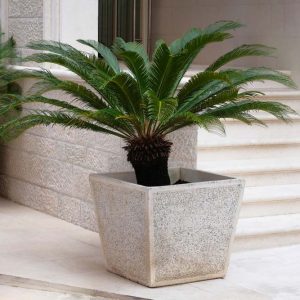Description
Sedum – Hylotelephium – Stonecrop –
There are about 400 usually succulent annuals and evergreen, semi evergreen, or deciduous biennials, perennials, subshrubs, and shrubs, in the Crassulaceae family, in this genus. They are widely distributed, most are found in Mountains of the Northern Hemisphere, but some in arid areas of South America. Stonecrops are very variable from carpet forming to upright in habit reaching 3′ feet tall, and produce alternate, succulent, opposite, or whorled, fleshy, cylindrical, lanceolate or egg or elliptic al shaped, flattened leaves and usually terminal, often compound, cymes, panicles, or corymbs of generally star shaped and 5 petaled flowers(seldom 4 or 6 petaled), borne mostly in summer and autumn with twice the number of stamens than petals. Grow hardy species in a rock garden or at the front of a herbaceous or mixed border. All parts of the plant may cause mild stomach upset if ingested, contact with the sap may irritate skin.
Grow in moderately fertile, well drained, neutral to slightly alkaline soil in full sun. Vigorous species tolerate light shade. Cut back spreading species after flowering to maintain shaped. Divide larger, herbaceous species every 3 or 4 years to improve flowering in spring.
Prone to mealybugs, scale insect, slugs and snails, and the larvae of some Lepidoptera including Grey Chi.
S. rupestre – S. reflexum – Stone orpine – This vigorous, mat forming, evergreen perennial from the mountains of Central and Western Europe grows to 4″ tall at least 24″ wide. It produces alternate, pointed, cylindrical, gray-green leaves, to 3/4″ long. Upright, woody stems bear terminal, umbel like cymes, 2 ½” across, of star shaped yellow flowers, ½” across, nodding in bud, but erect as they open in late spring and early summer. Spreads freely, best in a large rock garden.
Zones 6-9





